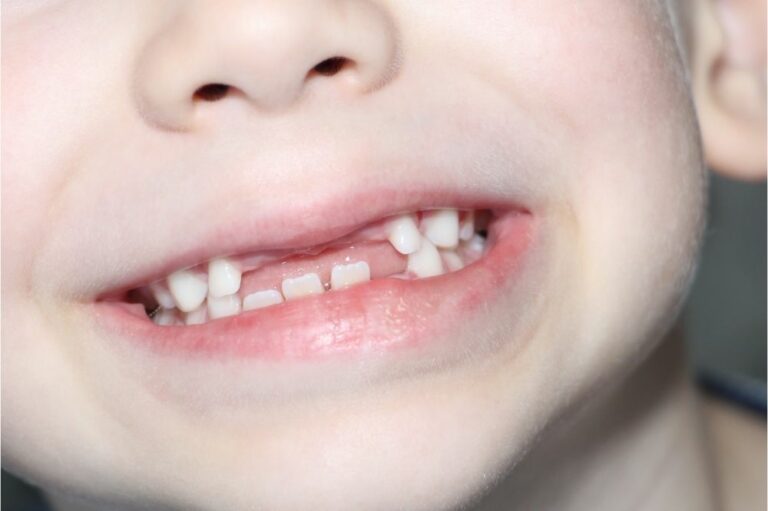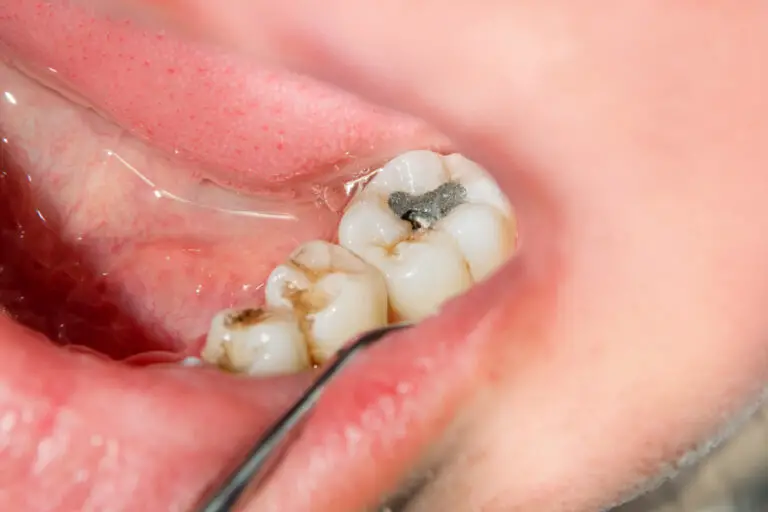You might not be aware that you have a cracked tooth until you experience pain or sensitivity. A cracked tooth, also known as a fractured tooth, occurs when there is a break or crack in the tooth. The severity of the crack can vary, and some cracks may not cause any symptoms at all.
There are different types of cracks that can occur in a tooth, including craze lines, fractured cusps, and vertical cracks. Craze lines are small, superficial cracks that typically do not cause any pain or sensitivity. Fractured cusps occur when a piece of the tooth’s chewing surface breaks off, usually around a filling. Vertical cracks can be more serious and can extend from the chewing surface of the tooth down towards the root. It is possible to have a vertical crack that is not visible to the naked eye.
Understanding Tooth Cracks
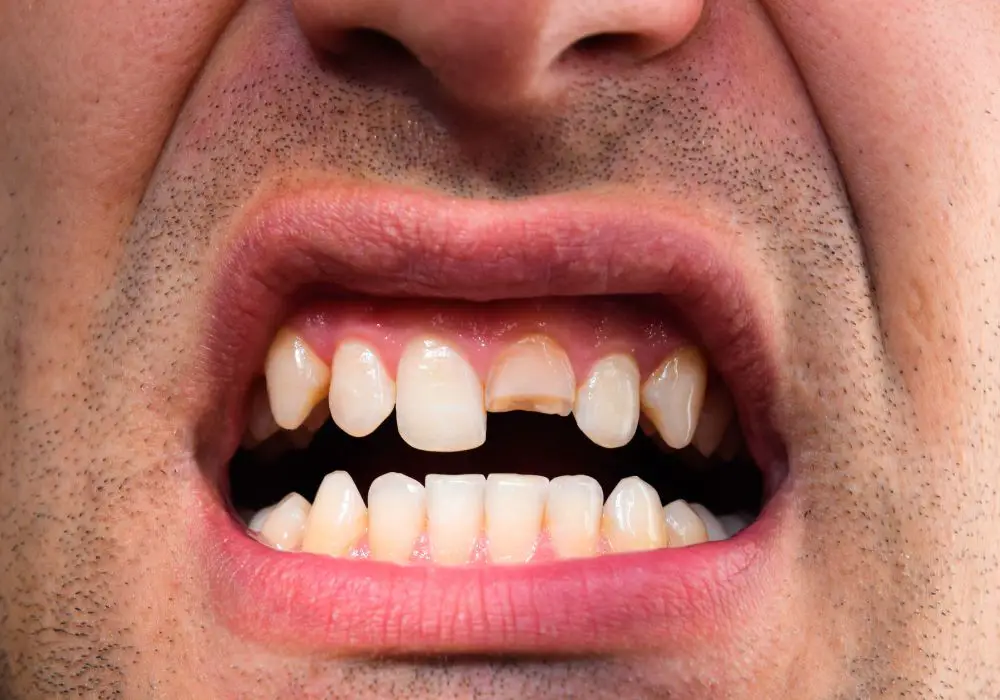
Cracking a tooth is a common dental problem that can happen to anyone at any time. Tooth cracks can occur for several reasons, including biting down on a hard object, grinding your teeth, or an injury to the mouth. In some cases, you may not even realize that you have a cracked tooth until you experience symptoms such as pain or sensitivity.
Here are some important things to know about tooth cracks:
- Types of tooth cracks: There are several types of tooth cracks, including craze lines, fractured cusps, and vertical cracks. Craze lines are tiny cracks that only affect the outer layer of the tooth and are usually harmless. Fractured cusps occur when a piece of the tooth breaks off around a filling, while vertical cracks extend from the chewing surface of the tooth down towards the root.
- Symptoms of tooth cracks: Depending on the severity of the crack, you may experience a range of symptoms. These can include pain when biting or chewing, sensitivity to hot or cold temperatures, or a sharp pain when releasing your bite. In some cases, you may not experience any symptoms at all.
- Diagnosing tooth cracks: If you suspect that you have a cracked tooth, it’s important to visit your dentist for an evaluation. Your dentist will perform a visual exam and may also take X-rays to determine the extent of the crack.
- Treating tooth cracks: Treatment for a cracked tooth will depend on the severity of the crack. In some cases, a filling or bonding may be sufficient to repair the tooth. However, more extensive cracks may require a crown or even a root canal to prevent further damage.
Overall, it’s important to take care of your teeth and visit your dentist regularly to catch any potential problems early on. If you suspect that you may have a cracked tooth, don’t hesitate to make an appointment with your dentist to get it evaluated and treated.
Causes of Tooth Cracks
If you have a cracked tooth, you may be wondering how it happened. Tooth cracks can be caused by a variety of factors, including:
Chewing Hard Foods
Chewing on hard foods like ice, hard candies, and popcorn kernels can cause tooth cracks. These foods can put a lot of pressure on your teeth, especially if you have weak or damaged teeth.
To prevent tooth cracks from chewing hard foods, try to avoid eating them altogether. If you do eat them, try to be careful and avoid biting down too hard.
Teeth Grinding
Teeth grinding, also known as bruxism, can cause tooth cracks over time. Grinding your teeth puts a lot of pressure on them, which can eventually lead to cracks.
If you grind your teeth, talk to your dentist about getting a mouthguard to wear at night. This can help protect your teeth from further damage.
Temperature Changes
Sudden changes in temperature can cause tooth cracks. For example, if you drink a hot beverage and then immediately eat something cold, your teeth can contract and expand rapidly, which can cause cracks.
To prevent tooth cracks from temperature changes, try to avoid eating or drinking things that are extremely hot or cold. If you do, try to let them cool down or warm up to room temperature first.
Overall, tooth cracks can happen for a variety of reasons. By being careful and taking steps to protect your teeth, you can reduce your risk of developing a cracked tooth.
Symptoms of Tooth Cracks
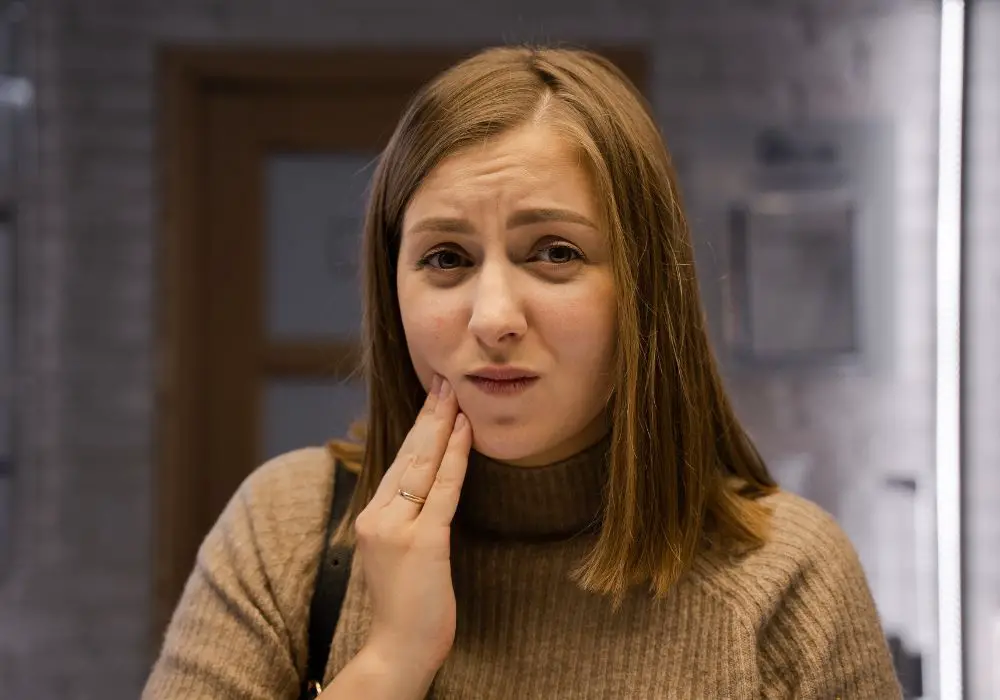
If you have a cracked tooth, you may not always know it. In fact, many people have cracked teeth and don’t experience any symptoms. However, some people may experience one or more of the following symptoms:
Toothache
A toothache is a common symptom of a cracked tooth. The pain may be constant or intermittent, and it may be mild or severe. You may feel the pain in one or more teeth, and it may be difficult to pinpoint the exact location of the pain.
Sensitivity to Cold and Heat
If you have a cracked tooth, you may experience sensitivity to cold and heat. You may feel a sharp pain or discomfort when you eat or drink something cold or hot. This sensitivity may be temporary or permanent, depending on the severity of the crack.
Pain While Eating
If you have a cracked tooth, you may experience pain while eating. The pain may be sharp or dull, and it may occur when you bite down or chew. You may also experience pain when you release the bite.
If you experience any of these symptoms, it’s important to see your dentist as soon as possible. Your dentist can examine your teeth and determine if you have a cracked tooth. Early diagnosis and treatment can help prevent further damage to your tooth and reduce your risk of complications.
Diagnosis of Tooth Cracks
If you suspect that you might have a cracked tooth, it is important to visit your dentist as soon as possible. Your dentist will be able to diagnose the problem and recommend the appropriate treatment. Here are some of the methods your dentist may use to diagnose tooth cracks:
Dental Examination
During a dental examination, your dentist will examine your teeth and gums for signs of damage or decay. They will also look for any visible cracks or fractures in your teeth. If your dentist suspects that you have a cracked tooth, they may use a dental explorer to gently probe the tooth to determine the extent of the crack.
X-Rays
If your dentist suspects that you have a cracked tooth, they may take an X-ray to get a better look at the tooth and determine the extent of the crack. X-rays can help your dentist identify cracks that are not visible to the naked eye, such as cracks that occur below the gum line.
Transillumination
Transillumination is a technique that involves shining a bright light through the tooth to look for cracks or fractures. This technique can be especially useful for identifying cracks that are not visible to the naked eye or that do not show up on X-rays.
In conclusion, if you suspect that you might have a cracked tooth, it is important to visit your dentist as soon as possible. Your dentist will be able to diagnose the problem and recommend the appropriate treatment. By using techniques such as dental examinations, X-rays, and transillumination, your dentist can accurately diagnose tooth cracks and help you get the treatment you need to restore your oral health.
Treatment Options for Cracked Teeth
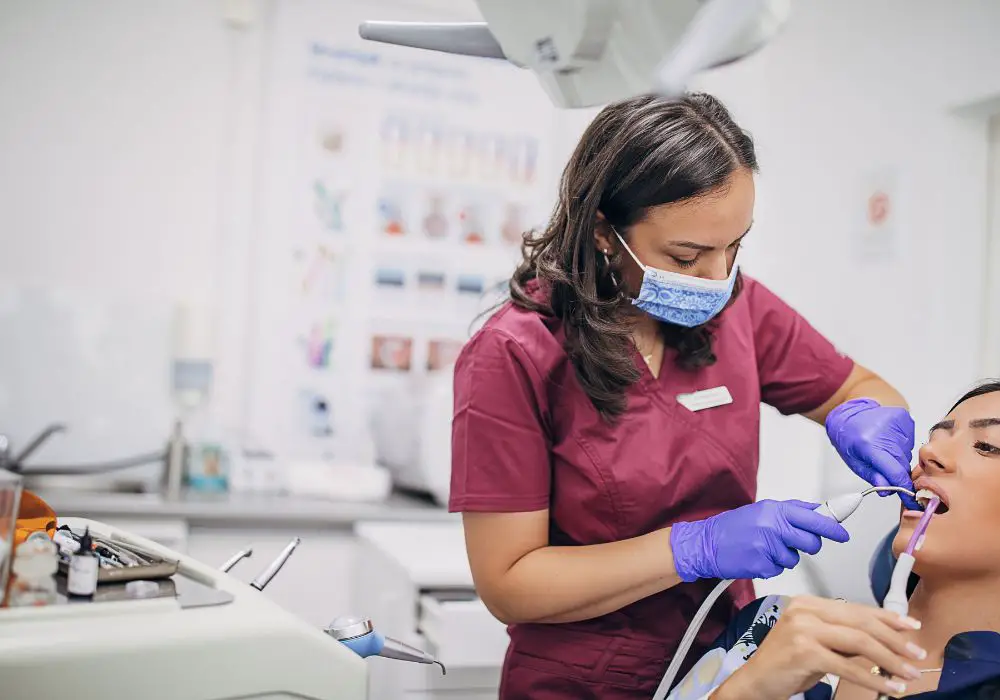
If you have a cracked tooth, it is important to seek treatment as soon as possible to prevent further damage and potential tooth loss. Here are some common treatment options for cracked teeth:
Dental Bonding
Dental bonding is a common treatment for minor cracks in teeth. This procedure involves applying a tooth-colored resin material to the affected tooth and shaping it to match the natural shape of the tooth. The resin is then hardened with a special light, bonding it to the tooth. This treatment is quick, painless, and can often be completed in a single visit to the dentist.
Root Canal Therapy
If the crack in your tooth has reached the pulp, or the innermost layer of the tooth, you may need root canal therapy. During this procedure, the damaged pulp is removed from the tooth and replaced with a filling material. The tooth is then capped with a crown to protect it from further damage. Root canal therapy is a more invasive treatment than dental bonding, but it is often necessary to save the tooth.
Tooth Extraction
In some cases, a cracked tooth may be too damaged to save and must be extracted. This is typically a last resort when other treatments have been unsuccessful or if the tooth is causing severe pain or infection. After the tooth is extracted, your dentist may recommend a dental implant or bridge to replace the missing tooth.
It is important to note that the best treatment for your cracked tooth will depend on the severity and location of the crack, as well as your overall dental health. Be sure to consult with your dentist to determine the best course of action for your individual needs.
Preventing Tooth Cracks
Tooth cracks can be painful and costly to repair. Fortunately, there are steps you can take to reduce your risk of tooth cracks. Some of these steps include:
Regular Dental Check-Up
Regular dental check-ups are essential in preventing tooth cracks. During your check-up, your dentist can identify any signs of tooth cracks and recommend treatment before the crack becomes worse. Additionally, your dentist can identify any other dental issues that can increase your risk of tooth cracks, such as tooth decay or gum disease.
Correct Eating Habits
Your eating habits can also affect your risk of tooth cracks. Hard foods, such as ice, hard candy, and popcorn kernels, can cause tooth cracks. Additionally, biting down on hard objects like pens or pencils can also cause tooth cracks. To reduce your risk of tooth cracks, avoid eating hard foods and avoid biting down on hard objects.
Use of Mouth Guard
If you play sports or grind your teeth at night, a mouth guard can help protect your teeth from tooth cracks. Mouth guards are custom-made to fit your teeth and can protect your teeth from impact during sports or grinding at night.
By following these steps, you can reduce your risk of tooth cracks and maintain healthy teeth.
Frequently Asked Questions
What are the symptoms of a cracked tooth?
A cracked tooth can cause a range of symptoms, including pain when biting or chewing, sensitivity to hot or cold temperatures, and discomfort when eating sugary or acidic foods. In some cases, you may also experience swelling or tenderness around the affected tooth.
How can a cracked tooth be diagnosed?
Diagnosing a cracked tooth can be challenging, as the symptoms can be similar to other dental problems. Your dentist may use X-rays or other imaging tests to look for signs of a crack in the tooth. They may also use a special tool to test the tooth’s response to pressure or temperature changes.
What are the different types of tooth fractures?
There are several types of tooth fractures, including craze lines, which are small, shallow cracks on the tooth’s surface, and vertical fractures, which extend from the tooth’s surface to the root. Other types of fractures include split teeth, which occur when a tooth splits into two pieces, and root fractures, which occur below the gum line.
Is it possible to have a cracked tooth without knowing?
Yes, it is possible to have a cracked tooth without knowing. In many cases, hairline cracks or other small fractures may not cause any noticeable symptoms. However, over time, the crack may worsen, leading to pain, sensitivity, and other dental problems.
Can a cracked tooth cause any other dental problems?
Yes, a cracked tooth can cause a range of other dental problems if left untreated. In some cases, the crack may allow bacteria to enter the tooth, leading to infection or decay. Additionally, a cracked tooth can weaken the tooth’s structure, making it more susceptible to further damage or breakage.
What are the treatment options for a cracked tooth?
The treatment for a cracked tooth will depend on the severity of the fracture. In some cases, the tooth may be able to be repaired with a filling or crown. However, if the crack extends into the tooth’s root, a root canal may be necessary to remove the damaged tissue. In severe cases, the tooth may need to be extracted and replaced with a dental implant or bridge.

